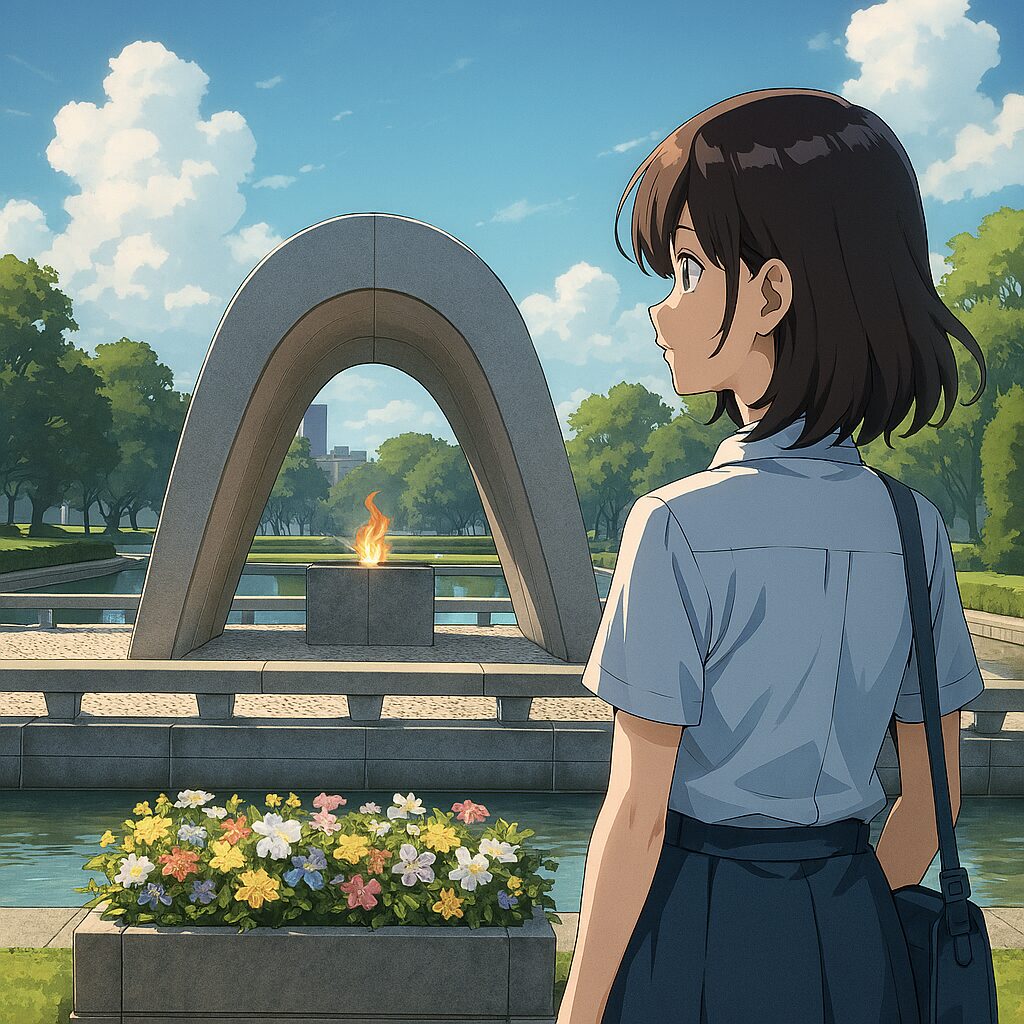Introduction: A Season of Quiet Remembrance
Every year on August 6 and 9, Japan observes the anniversaries of the atomic bombings of Hiroshima and Nagasaki. During this time, the air feels unusually still. Even the cicadas’ cries seem to echo with sorrow, as if nature itself mourns alongside us. The memories of war drift through the summer breeze, whispering stories that must never be forgotten.
This blog post is a heartfelt reflection on how many Japanese people view these tragic events—not with demands for apology or compensation, but with a deep desire for peace and understanding. It is a message for the world, rooted in history and carried forward by hope.
☢️ What Happened in Hiroshima and Nagasaki?
On August 6, 1945, at 8:15 a.m., the atomic bomb “Little Boy” was dropped on Hiroshima, killing approximately 140,000 people. Three days later, on August 9, “Fat Man” was dropped on Nagasaki, claiming around 74,000 lives. These bombings were justified at the time as a means to end World War II, but their devastating impact and ethical implications continue to be debated worldwide.
From the perspective of international law, the indiscriminate targeting of civilians violates the Hague Conventions. As Japanese citizens, we naturally feel anger and sorrow over these acts. But our response goes beyond resentment.
🇯🇵 A Japanese Perspective: Not Apology, But Aspiration
Many Japanese people do not seek apologies or reparations for the atomic bombings. Instead, we focus on a more profound goal: ensuring that such tragedies never happen again.
This sentiment is reflected in the thousands who visit the Hiroshima Peace Memorial Museum and the Nagasaki Atomic Bomb Museum each year. These institutions house testimonies from survivors, charred belongings, and haunting photographs of the destruction. They are not just museums—they are places of remembrance, education, and transformation.
Through these experiences, we hope to share a universal message: peace is not a political stance, but a human necessity.
🕊️ Hiroshima and Nagasaki as Symbols of Peace
In Hiroshima, the “Flame of Peace” continues to burn and will only be extinguished when all nuclear weapons are eliminated from the Earth. In Nagasaki, the Peace Statue raises its right hand toward the sky, warning of the threat of nuclear arms.
These cities are no longer just sites of devastation—they are beacons of peace, resilience, and global solidarity.
🌐 To Our International Readers: This Memory Belongs to All of Us
If you live outside Japan, the atomic bombings may feel distant—historical footnotes in a war long past. But they are not just part of Japan’s history. They are part of humanity’s history.
The use of nuclear weapons transcends borders and threatens the dignity of all people. That’s why sharing the memories of Hiroshima and Nagasaki is not just a Japanese responsibility—it’s a global one.
We invite you to explore the online exhibits of the Hiroshima Peace Memorial Museum or read the testimonies of hibakusha (atomic bomb survivors). Their voices speak beyond language, reminding us of our shared humanity.
✍️ What We Can Do Today
Each of us has the power to shape the future by remembering the past. By learning about these tragedies and passing on their lessons, we take the first step toward peace.
Commemorating the atomic bombings is not just an act of mourning—it is a commitment to a better world.
May this blog post offer you a moment of quiet reflection, and may it inspire a deeper understanding of the importance of peace.



コメント